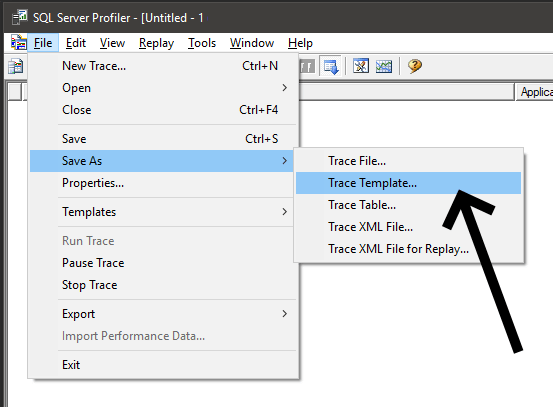
Use the Green Arrow icon at the top to restart the trace. use the Red Square icon at the top to stop the trace. Traces too large are often not efficient or helpful. Be sure to keep the trace file as small as possible and only capture the steps in Dynamics GP to reproduce the problem. Use the icons listed below to help you capture the trace. Click RUN to start the trace and the SQL Profiler window will open and the trace is now running. Note: All the fields in Method 2 will automatically be selected in the Events Selection tab.ģ. In the Events Selection tab, mark the SHOW ALL EVENTS checkbox and SHOW ALL COLUMNS in the lower right corner. Also uncheck Enable File Rollover option (Under SAVE TO FILE section).Į. (Should beging with 'MSGP' prefix.)Ĭ. Click to mark the SAVE TO FILE checkbox and browse to a location you would like to save the trace file to. Click the drop-down icon next to the USE THE TEMPLATE field, and scroll down to the end of the list and select the SQL trace template you imported in. In the Trace Properties window, enter a name for Trace Name as desired.ī. (Or you can do a Save|Save As and go to that location on double-click on the tdf file.) Then you should get a message that the tdf file was imported successfully. (Take note of the file name as this is the name for the template you will look for in SQL profiler.) Click Yes if prompted to overwrite. tdf file for your version and SQL Profiler will automatically open. In the zip file, click on the TRACETMPL folder and double-click on the.
#Sql server 2012 profiler permissions zip file#
Determine what version of SQL Server you have and double-click the link below to download the zip file of SQL templates. To use a SQL Trace template, follow these steps:ġ. The templates are pre-mapped for the fields noted in Method 2, so will save you some time from having to manually map the fields. Use either method below to gather the SQL Profiler Trace: METHOD 1 - Use a SQL Template (Note, you can use the same steps or selection of event classes for any version of SQL Profiler.)
#Sql server 2012 profiler permissions how to#
This article describes how to use SQL Profiler to create an SQL trace in Microsoft SQL Server 2005 or in Microsoft SQL Server 2008.

Dynamics GP 2010 Dynamics GP 2013 Microsoft Dynamics GP 2015 Dynamics GP 2016 Dynamics GP 2018 Dynamics GP More.


 0 kommentar(er)
0 kommentar(er)
